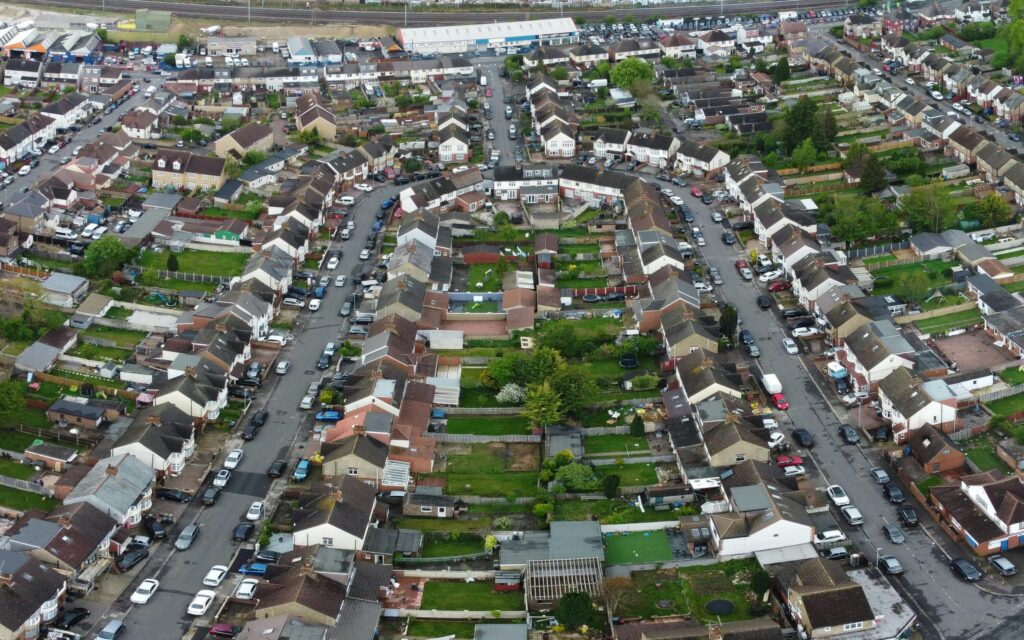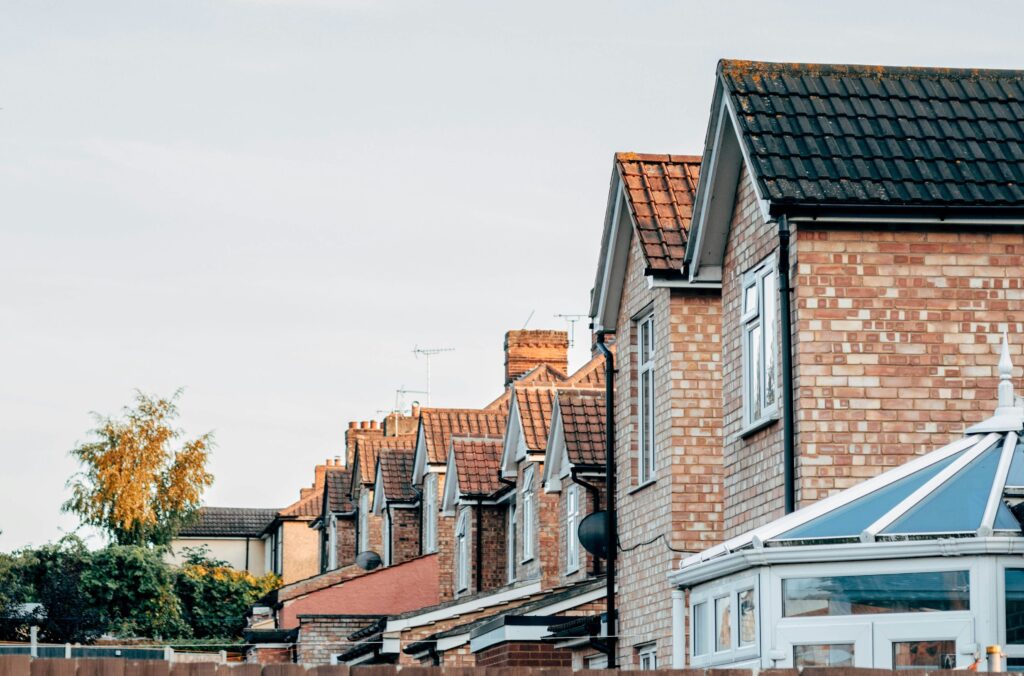Greenbelt land in England is often viewed as a pristine expanse of countryside, dedicated to preserving natural beauty and preventing urban sprawl. But the reality is a bit more complex. Greenbelts are primarily designated to stop the spread of urban areas and to maintain open spaces around our towns and cities. They cover about 12.6% of England’s land and are not always the lush landscapes one might imagine. Instead, much of this land is used for agriculture, golf courses, and other non-environmental purposes. The Greenbelt policy, established in the 1940s, aims to keep urban areas from merging and to safeguard our countryside’s character.
However, working within Green Belt areas can present unique challenges. Navigating the planning process requires a clear understanding of what constitutes “very special circumstances” that might justify development. From addressing pressing housing needs to making a case for preserving historic buildings, our guide is here to help you unravel these complexities. Whether you’re tackling a new project or seeking to adapt existing structures, we’ve laid out the essential steps and considerations to help you move forward with your Green Belt development.
Did You Know? Surprising Facts About the Green Belt
Contrary to popular belief, Green Belt land isn’t chosen for its scenic beauty or ecological importance. It’s all about location! These areas are designated primarily to prevent cities from sprawling uncontrollably.
Did you know that a whopping 76% of London’s Green Belt—over 26,000 hectares—is actually used for agriculture, along with golf courses and even hospitals? It’s not just untouched countryside as many might think!
Only about 22% of this vast Metropolitan Green Belt is set aside for environmental protection or public parks. So, the next time you visit, remember that much of it isn’t open for public enjoyment!
To hit England’s ambitious target of 300,000 new homes each year, we might only need to develop 2% of the existing Green Belt land annually. Imagine the possibilities if this land were unlocked for much-needed housing!
Challenges of Obtaining Planning Permission in the Green Belt and the Use of Permitted Development Rights
Securing planning permission in Greenbelt areas can be quite demanding due to strict regulations aimed at preserving the open countryside and preventing urban sprawl. To succeed, you’ll often need to prove that your development meets the criteria for “very special circumstances,” a high bar that ensures minimal impact on Greenbelt purposes.
Yet, there’s a helpful option to consider: Permitted Development Rights.
Permitted development rights (PDRs) are a set of permissions that allow certain types of development without needing a full planning application. They’re designed to make it easier for property owners to carry out minor changes and improvements. In areas outside the Green Belt, these rights might be fairly straightforward. For more information about this visit our Permitted Development Rights website. However, in the Green Belt, things get a bit more complex.
How Do They Differ in the Green Belt?
Tighter Restrictions: In the Green Belt, permitted development rights are more tightly controlled to preserve the openness and rural character of the area. While you might have more flexibility elsewhere, expect stricter limits here.
Specific Criteria: Even with PDRs, you’ll need to meet specific criteria to ensure your development doesn’t detract from Green Belt purposes. For example, if you’re looking to extend a building or add a new structure, the size and impact of the development will be closely scrutinised to ensure it doesn’t harm the openness of the Green Belt.
Thorough Documentation: You’ll need to carefully document how your proposed development complies with both PDRs and Green Belt regulations. This often involves detailed plans and impact assessments, and you might need a certificate of lawful development to confirm that your project adheres to permitted rights.
Although Permitted Development Rights offer a streamlined approach for certain developments, there are several specific scenarios where you might find yourself unable to use them in this protected area. Here’s what you need to know:
Councils have the authority to remove permitted development rights through conditions attached to planning permissions. This practice, though less common now, might still apply to newly built houses or significant extensions.
PDRs are generally available for properties classified as houses by the local council. If your property is a flat, maisonette, or not considered a house, you won’t be able to apply for PDRs.
If your property involves a barn conversion or a building previously used for agriculture or equestrian purposes, and it was converted using Class Q PDRs, you might face limitations. Barn conversions approved through full planning permissions often retain some PDRs, but councils frequently impose restrictions.
Properties within Green Belt zones might also be covered by other designations, such as Areas of Outstanding Natural Beauty (AONB), National Parks, or conservation areas, which can impose further restrictions. Moreover, listed buildings and their associated gardens are excluded from Permitted Development Rights (PDRs).
When considering new developments, you must factor in previous extensions. PDRs apply based on the “original house” as it was built or as it stood in 1948. If your property has already been extended, this may limit the extent of further permitted developments.
For outbuildings and other structures, you must adhere to the 50% rule. This rule limits the total area covered by permanent structures to half of the land associated with your house, excluding any additional land like open fields or parkland.
Recognizing these constraints is key to making sure your project adheres to Green Belt regulations and avoids potential challenges. For tailored advice and direction specific to your situation, it’s best to seek guidance from local planning authorities or professionals.
If your project does not qualify under permitted development rights (PDRs), you may need to undergo the full planning application process. This involves submitting detailed plans, reports, and assessments for approval by the local planning authority. While this process is more comprehensive than the PDR route, it ensures that your project meets all required regulations. If you want to get more information about this application type, visit our Full Planning Application website.
When it comes to Green Belt areas, obtaining planning permission can be particularly challenging.
So, What Do You Need to Do to Get a Green Belt Planning Permission?
Securing planning permission for Green Belt development is tough but achievable with the right approach and team. According to Paragraph 152 of the National Planning Policy Framework, “inappropriate development is, by definition, harmful to the Green Belt and should not be approved except in very special circumstances.”
Very Special Circumstances: To gain approval, you need to demonstrate that very special circumstances justify the harm to the Green Belt. While there isn’t a definitive list, some accepted circumstances include:
- Lack of a five-year housing land supply
- Self-build and custom-build housing needs
- Contributions to the local economy or tourism
- Improvements to recreational or educational facilities
- Health reasons or special personal circumstances
Green Belt Exceptions: In addition to very special circumstances, there are specific Green Belt exceptions that may allow for development:
- Agricultural and forestry developments
- Outdoor sports and recreational facilities
- Extensions or alterations to existing dwellings
- Replacement of existing buildings
- Re-use of buildings of permanent construction
- Limited infilling in villages
- Affordable housing for local needs

Despite the stringent restrictions and the need for special circumstances to obtain planning permission in Green Belt areas, there’s a glimmer of hope on the horizon.
Recent policy shifts are opening up new opportunities for Green Belt development. Traditionally, the Green Belt policy has focused on preventing urban sprawl, but emerging reforms suggest a more flexible approach. The Conservative Party has historically been cautious about developing Green Belt land, prioritising the preservation of natural spaces. However, there is now a growing recognition within the party of the need to address housing shortages while maintaining a balanced approach to conservation. Meanwhile, the Labour Party is actively considering changes that would grant local authorities more leeway in developing Green Belt land to tackle the housing crisis.
Additionally, there’s a potential expansion of exceptions for Green Belt development, including affordable housing and community facilities. These developments could make it easier to navigate planning permissions and align projects with current policy trends, offering a more nuanced approach to balancing development needs with environmental preservation.
At the End of the Day
Navigating the Green Belt can feel like a bit of a maze, whether you’re trying to make use of permitted development rights or diving into the full planning application process. Although new policies are slowly making things a bit easier, it’s still a bit of a balancing act.
When working in protected areas, having a skilled professional team by your side can greatly enhance your chances of success. Their expertise can simplify complex regulations into actionable steps, ensuring your project meets all required standards. While it’s possible to gain approval on your own, partnering with experienced professionals can significantly improve your prospects of achieving your objectives in the Green Belt.
How Homz Can Help You Navigate Green Belt Development?
As we’ve explored, getting approval for Green Belt projects can be a bit tricky, but it’s definitely doable with the right approach.
So, what can we do for you? At Homz, we’re passionate about making your Green Belt ambitions a reality. Our architects and planning consultants are well-versed in the nuances of Green Belt regulations and know exactly how to navigate the planning process effectively. We’re committed to ensuring your project meets council requirements while delivering results that truly satisfy your expectations.
Ready to get started? Contact us and let’s discuss how we can bring your Green Belt project to life! Additionally, you can use our Green Belt Map to discover whether your property falls within these protected areas.





